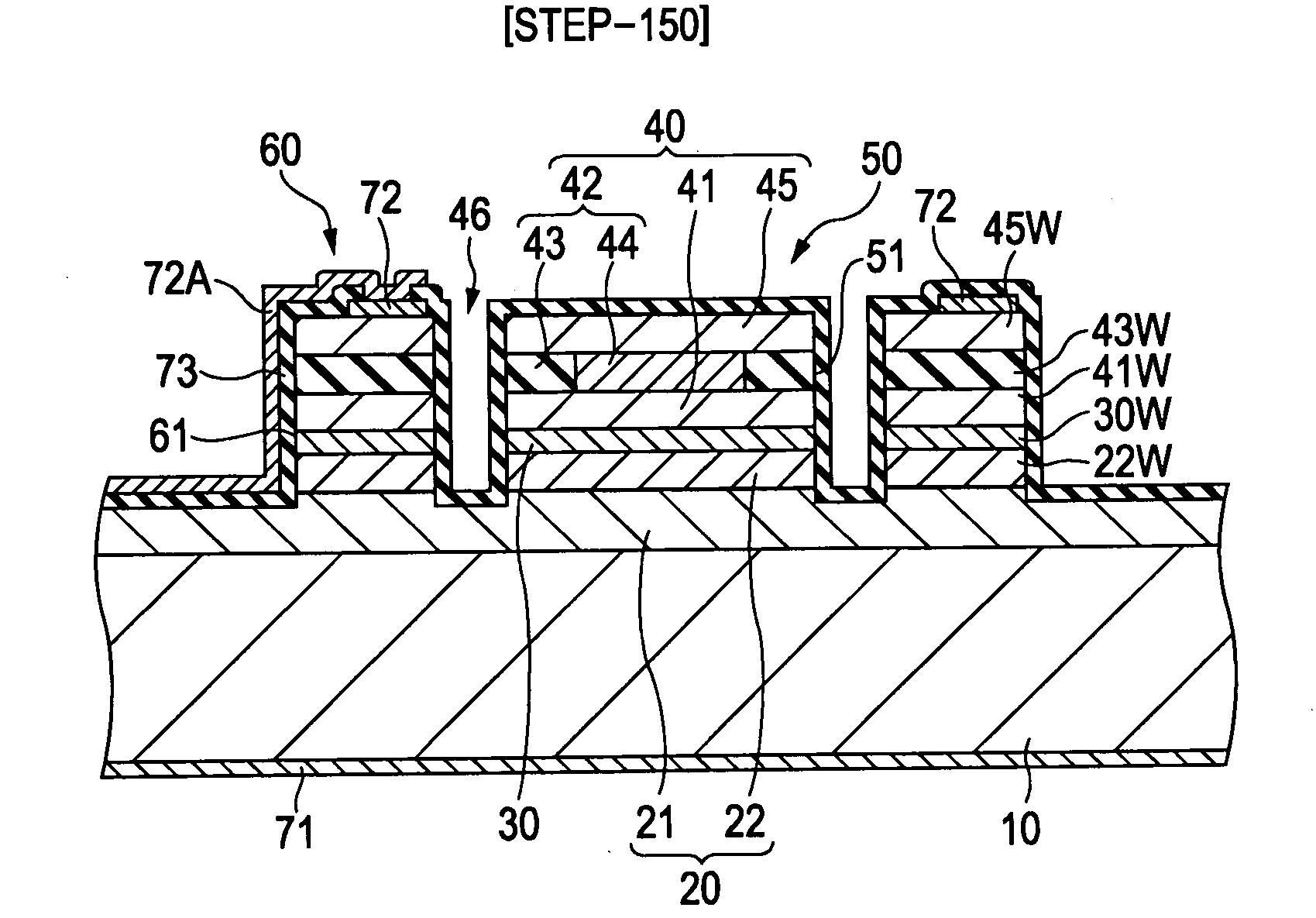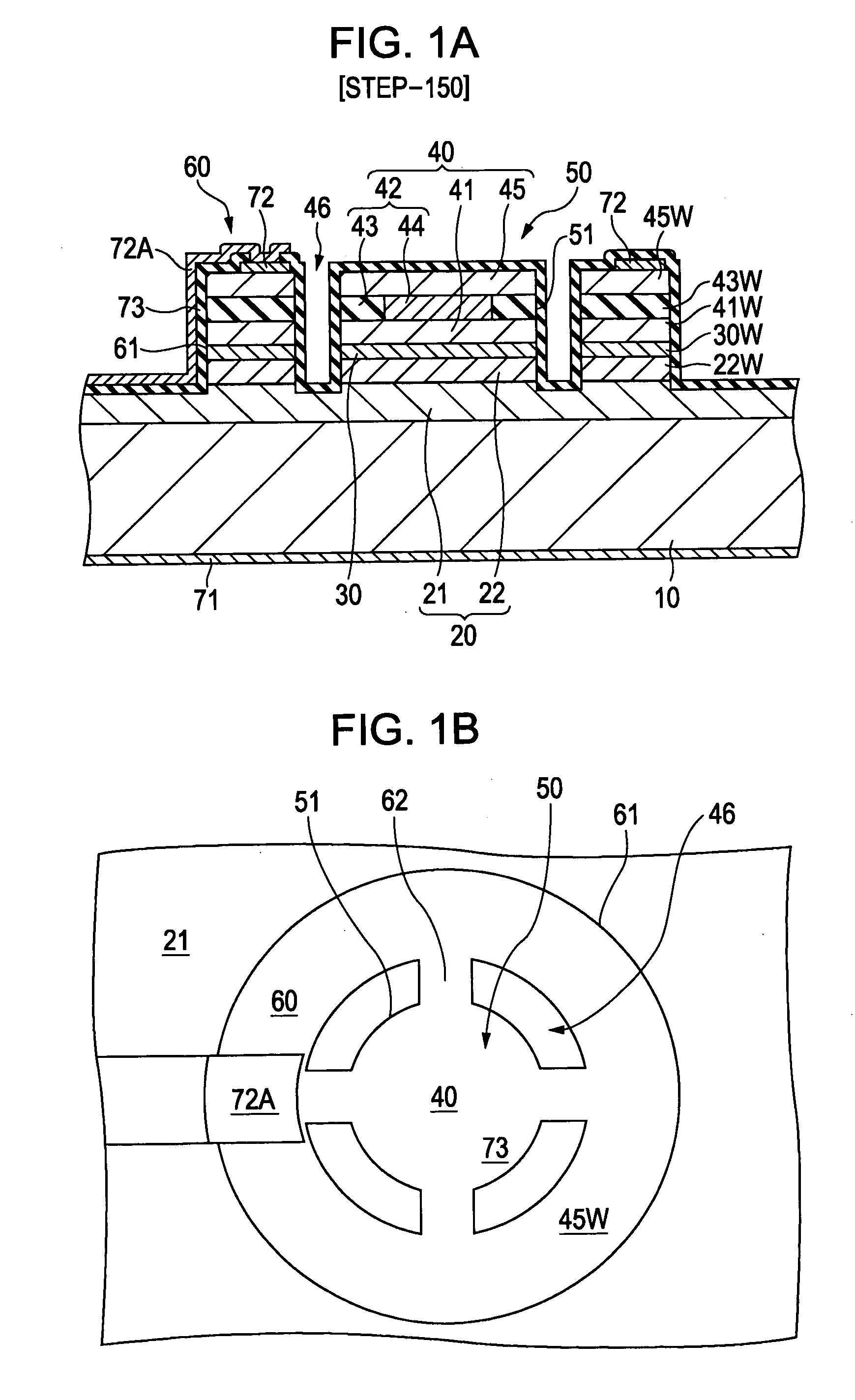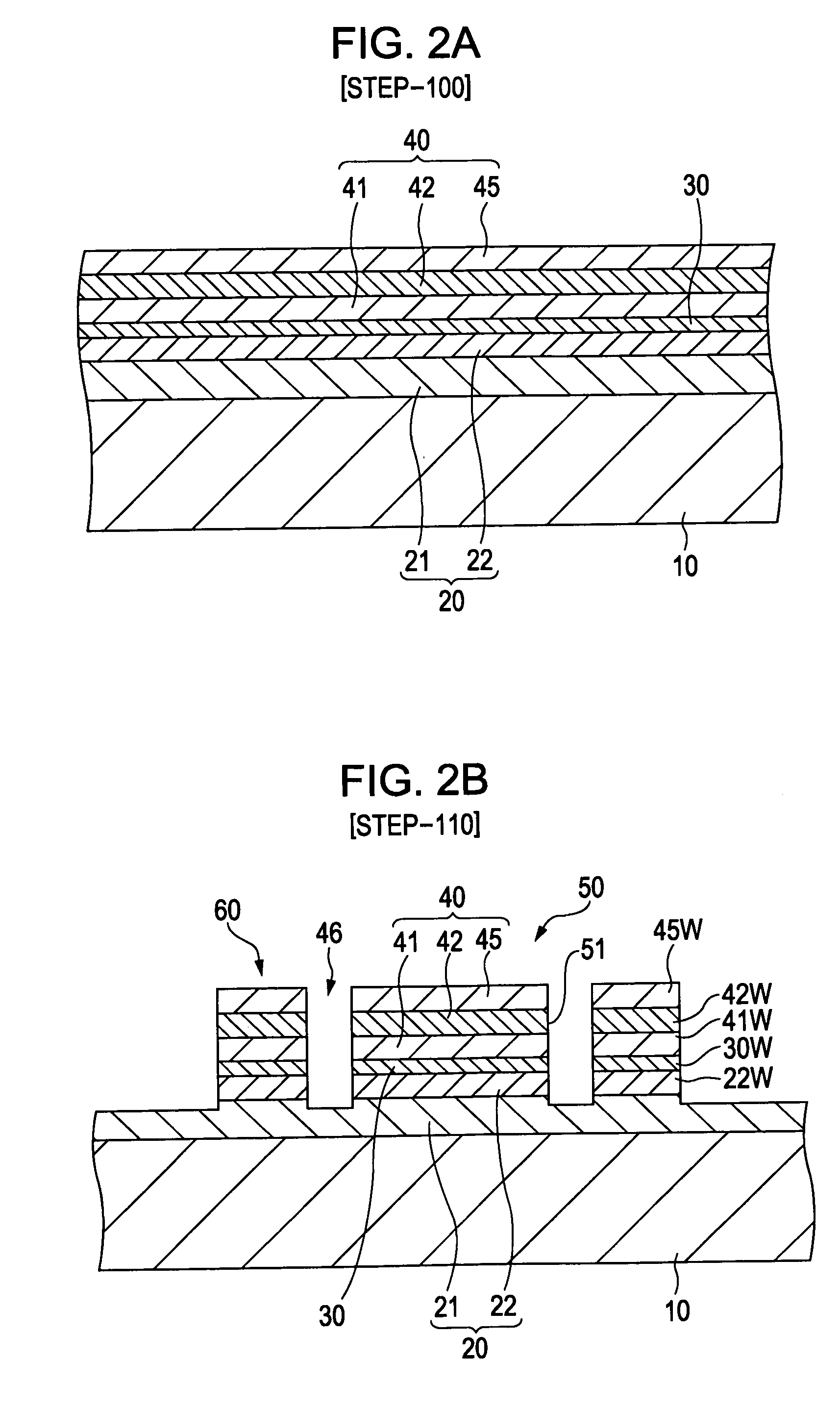Light-emitting element and method for manufacturing the same
a technology of light-emitting elements and manufacturing methods, which is applied in the direction of laser optical resonator construction, semiconductor lasers, lasers, etc., can solve the problems of inability to achieve desirable effects, inability to achieve far-field pattern defects, etc., and achieve easy and accurate control of the width of the current constriction region, the effect of reducing the rate of insulating treatmen
- Summary
- Abstract
- Description
- Claims
- Application Information
AI Technical Summary
Benefits of technology
Problems solved by technology
Method used
Image
Examples
example 1
[0066]Example 1 relates to a light-emitting element according to the first embodiment of the present invention and a method for manufacturing the light-emitting element according to the first embodiment. FIGS. 1A and 1B are a schematic partial cross-sectional view and a schematic partial plan view, respectively, of a light-emitting element in Example 1. Note that in Example 1 or Example 2 or 3, which will be described later, the first conductivity type is n type, and the second conductivity type is p type. Furthermore, in Example 1 or Examples 2 or 3, which will be described later, the light-emitting element is a surface-emitting laser element (vertical cavity surface-emitting laser; VCSEL) in which light is emitted through a second compound semiconductor layer.
[0067]The light-emitting element of Example 1 has a mesa structure 50 in which a first compound semiconductor layer 20 of the first conductivity type (n type), an active layer 30, and a second compound semiconductor layer 40 ...
example 2
[0088]Example 2 relates to a light-emitting element according to the second embodiment of the present invention and a method for manufacturing the light-emitting element according to the second embodiment. FIGS. 8A and 8B are a schematic partial cross-sectional view and a schematic partial plan view, respectively, of a light-emitting element in Example 2.
[0089]As in Example 1, the light-emitting element of Example 2 has a mesa structure in which a first compound semiconductor layer 20 of the first conductivity type (n type), an active layer 30, and a second compound semiconductor layer 40 of the second conductivity type (p type) are disposed in that order. At least one of the first compound semiconductor layer 20 and the second compound semiconductor layer 40 has a current constriction region 44 surrounded by an insulation region 43 extending inward from a sidewall portion 51 of the mesa structure 50. Specifically, as in Example 1, the light-emitting element of Example 2 has the mes...
example 3
[0106]Example 3 relates to a light-emitting element according to the third embodiment of the present invention and a method for manufacturing the light-emitting element according to the third embodiment. FIGS. 13A and 13B are a schematic partial cross-sectional view and a schematic partial plan view, respectively, of a light-emitting element in Example 3.
[0107]As in Example 1, the light-emitting element of Example 3 has a mesa structure 50 in which a first compound semiconductor layer 20 of the first conductivity type (n type), an active layer 30, and a second compound semiconductor layer 40 of the second conductivity type (p type) are disposed in that order (specifically, disposed in that order on a substrate 10). At least one of the first compound semiconductor layer 20 and the second compound semiconductor layer 40 has a current constriction region 44 surrounded by an insulation region 43 extending inward from a sidewall portion 51 of the mesa structure 50. That is, the light-emi...
PUM
 Login to View More
Login to View More Abstract
Description
Claims
Application Information
 Login to View More
Login to View More - R&D
- Intellectual Property
- Life Sciences
- Materials
- Tech Scout
- Unparalleled Data Quality
- Higher Quality Content
- 60% Fewer Hallucinations
Browse by: Latest US Patents, China's latest patents, Technical Efficacy Thesaurus, Application Domain, Technology Topic, Popular Technical Reports.
© 2025 PatSnap. All rights reserved.Legal|Privacy policy|Modern Slavery Act Transparency Statement|Sitemap|About US| Contact US: help@patsnap.com



